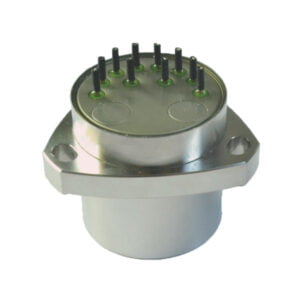Strapdown inertial navigation system has the advantages of complete autonomy, no interference, real-time output of carrier attitude, position, speed and other navigation information, which has been widely valued by various countries in the military and civilian fields, especially in the military field, and is widely used in various missile and satellite launches. Therefore, its accuracy is one of the important symbols to measure the inertial navigation system. There are many factors that affect the accuracy of the strapdown inertial navigation system, such as the measurement accuracy of the inertial device, the algorithm of attitude solving and the speed of signal processing. Under the condition of the same algorithm selection and hardware implementation speed, the error compensation of gyroscope and accelerometer of inertial devices is particularly important. Among many factors affecting the output accuracy of inertial devices, temperature is the most significant and common factor.Compared to other accelerometers, the ER-QA-03D quartz accelerometer can withstand the operating ambient temperature of -55~180 ° C, and the bias repeatability is <50μg, and the nominal repeatability is <80 ppm.
The working principle of quartz flexible accelerometer
Quartz flexible accelerometer is a kind of force balance accelerometer, which is composed of two parts: the meter head and the servo circuit. The flexible pendulum plate and torque coil constitute a mass block sensitive to acceleration. When the acceleration input, the flexible pendulum plate deviates from the equilibrium position, at this time, the moving plate connected with the flexible pendulum plate also deviates from the original position, this deviation is detected by the differential capacitance sensor and converted into a current signal output, and then fed back to the torque part of the constant magnetic field, thus generating a balance force. Forcing the flexible pendulum to deflect to the original equilibrium position, the magnitude of the current is proportional to the magnitude of the acceleration, and the magnitude of the acceleration can be detected by detecting the magnitude of the current. The bias repeatability of ER-QA-01A produced by this principle is less than 10μg, the standard factor repeatability is less than 10 ppm, and the second-order nonlinear repeatability is 10μg/g², which makes it the best choice for high-precision inertial navigation systems.
Temperature drift analysis of quartz flexible accelerometer
Inertial devices, including gyroscopes and accelerometers, are affected by temperature in practical applications, mainly in two aspects: one is the sensitivity of the inertial device itself to temperature, and the other is the influence of the temperature field around the device, that is, the temperature gradient and the thermal gradient around the shell will cause errors. The thermal expansion and cold contraction of the material will cause the deformation of the instrument structure parts and the change of the physical parameters of various materials inside, which directly affects the output stability.
In order to reduce and compensate the influence of temperature on the accuracy of the quartz accelerometer and its system, the methods often used are:
1. Development of temperature-insensitive inertial devices. Starting from the thermal design of the inertial device, the layout of the device, the material and the structural shape of the parts meet the requirements of temperature insensitive.
- Materials and components with negative temperature coefficient are added to the structure to offset the changes in other related material physical parameters caused by temperature changes and compensate the influence of temperature on the accuracy of the inertial device.
This is just an article sharing link, if you want to get more content, please click here:

What Effect Does Temperature Have on Quartz Flexible Accelerometer? - Ericco Inertial System
Temperature can significantly impact the performance of a quartz flexible accelerometer, affecting its sensitivity, accuracy, and stability.
ericcointernational.com

